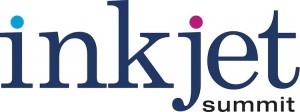This issue contains a special section that recaps some of the highlights and key takeaways from what was the third-annual Inkjet Summit. It’s been fascinating to watch the production inkjet printing market mature, and the Inkjet Summit has served as an accurate barometer to measure the triumphs and tribulations of stakeholders on both the printer and supplier sides of the equation.
Back in 2013—when the Inkjet Summit debuted—some were still questioning if the total cost of ownership for continuous-feed inkjet printing was truly lower than that for equivalent toner-based digital presses. Or whether the marketplace, especially for full-color direct mail, book and transactional/transpromo document applications, would accept inkjet’s print quality levels in comparison to the output from offset presses. Early inkjet adopters were also quick to point out that choosing the engine supplier is just one piece of the puzzle; just as critical is the proper selection of feeding and finishing equipment, front end and workflow software, and substrate supplier partnerships.
 At last year’s Inkjet Summit, a commercial printing track was added to reflect continuous-feed inkjet’s emergence for general commercial printing uses. More importantly, the new track also reflected the wave of cut-sheet inkjet printers that is starting to become available, which makes the inkjet entry point for many commercial printers more realistic. Another key topic at the 2014 event centered around the range of coated and uncoated paper options, or lack thereof, that were commercially available for production inkjet printing.
At last year’s Inkjet Summit, a commercial printing track was added to reflect continuous-feed inkjet’s emergence for general commercial printing uses. More importantly, the new track also reflected the wave of cut-sheet inkjet printers that is starting to become available, which makes the inkjet entry point for many commercial printers more realistic. Another key topic at the 2014 event centered around the range of coated and uncoated paper options, or lack thereof, that were commercially available for production inkjet printing.
Fastforward one year later to Inkjet Summit 2015 and it was readily apparent how paper mills—by partnering with a wide range of inkjet press manufacturers to test press/substrate compatibility—had made solid strides to increase their portfolio of approved offerings. This year, pricing concerns among printer attendees seemed to focus more on ink than on paper. In-line finishing equipment that can keep pace with today’s high-speed inkjet presses also remains a vexing issue.
In spite of the headwinds and growing pains being encountered as production inkjet continues to mature, printers and suppliers alike will all agree that this is a very exciting time to be in the printing industry.
Stakeholders are participating in a revolution, not merely evolution.

Mark Michelson now serves as Editor Emeritus of Printing Impressions. Named Editor-in-Chief in 1985, he is an award-winning journalist and member of several industry honor societies. Reader feedback is always encouraged. Email mmichelson@napco.com











